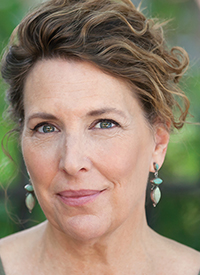 Laura Pirie, Pirie
Laura Pirie, PirieAssociates Architects
Recently, I participated in a neighborhood meeting where transportation and roadway changes were discussed. There were very strong opinions expressed both for and against the changes. As the evening unfolded and emotions rose, rather than getting frustrated, I shifted my perception and began to observe the meeting as if I were watching a movie. This shift kept me from getting hooked by everyone’s emotions and allowed me to see the many points of view being shared.
Here’s what I saw:
• Some wanted to learn.
• Some wanted to complain.
• Some wanted to share.
• Some were afraid.
Those who were afraid really caught my attention. Seeing how fear was driving points of view and reactions to the discussion was so simple - and oh so powerful.
It seemed that two basic qualities were present in the fear relations: one, people seemed to feel very uncertain of the “new” condition and its impact on them, and the “unknown” is very difficult for people to navigate; and two, very little time was spent discussing the underlying ideas related to the proposed change, so the only thing people had to react to was the solution with little to no understanding of reasoning or problems the proposed change was intended to address.
This experience led us to consider and develop a more inclusive community process to facilitate greater understanding, gather more complete input, and offer a platform for consensus. When meeting with a group of stakeholders, follow these four steps to build a solution with genuine community input and support.
1. Bring fear into the light and reframe it into curiosity: Oftentimes, community meeting attendees are in a state of defensiveness driven by fear – fear of the unknown, fear of a solution that does not yet exist. This defensiveness acts as a giant roadblock to effective progress. As the first step of bringing down that wall, talk about fears! Most of the time we push fear away because it is uncomfortable. Yet, when fear is invited into the discussion, it’s infinitely easier to find a solution. Why? Because it’s a lot easier to find a solution to a challenge that we can see than it is to find a solution to a one that’s locked in the shadows. Remind attendees that their thoughts are valued and encourage them to be curious about other points-of-view.
2. Find the basic common thread: As stakeholders voice their wishes and fears, listen for the common thread among similar and seemingly opposing points-of-view. It is important to find a starting point upon which everyone can agree to move forward. Even with very different groups, common threads are possible, and can act as a bridge to larger consensus.
3. Cull-out ideas: People naturally jump to solutions. Continue to push conversations back to the heart of the IDEAS informing proposed solutions by asking questions and digging deeper and deeper. These ideas will form a foundation from which solutions can begin to develop.
4. Test solutions: Armed with a set of ideas and goals, begin to test possible solutions. As the solution develops, continuously check back to be sure it maintains alignment with initial goals. Stakeholders will be far more receptive to a proposed solution when their individual and shared goals have are what inspired it. Through active, open engagement, instill confidence in community groups that differing voices are welcome and important to developing well-functioning, satisfying solutions.
About Pirie Associates
Philosophy: Architecture has the capacity to enrich our lives and embody our aspirations. We design environments that become collaborators in life: encouraging inhabitants to live more fully, work more authentically, and play more freely.
We are attracted to stories: Stories of human being. Stories of why people, enterprises, and communities do what they do, what they value, and how they live. We listen deeply to stories because through tone and nuance, stories reveal aspirations. Like good biographers, we shapeshift our awareness to grasp the details which allow us to design environments for our clients - not for us.
Practice: We are innovators. Innovation most often comes from expanding outside of one’s discipline to explore challenges from a new perspective. We specialize in working with clients who are ready to take their business, organization, or community to the next level by purposefully engaging their built environment. Our work is not driven by project type or style, but by a clients’ willingness to see their environment as an active collaborator in their day to day life, organization or community.
Within this focus, we have developed expertise with residential, commercial, institutional, historical and urban design work, and have particular depth in using broad, integrated strategies for business and organizational development and community engagement.
Process: Good design starts with listening - on our end. Good Design starts with dreaming – on your end. It’s our job to draw out, find the form, and express the intent of your dream, in as full dimension as possible, in the environments we create. Together.
We engage a wide array of tools, many of which reside outside of the traditional discipline of architecture. We listen like psychologists. We evaluate like strategic consultants. We interpret like marketers. We design like architects. We detail like craftsmen. We meet each client where they are, to forward their mission, even if that leads to something other than a traditional architectural solution.
Laura Pirie, AIA, is the principal of Pirie Associates Architects, New Haven, Conn.








